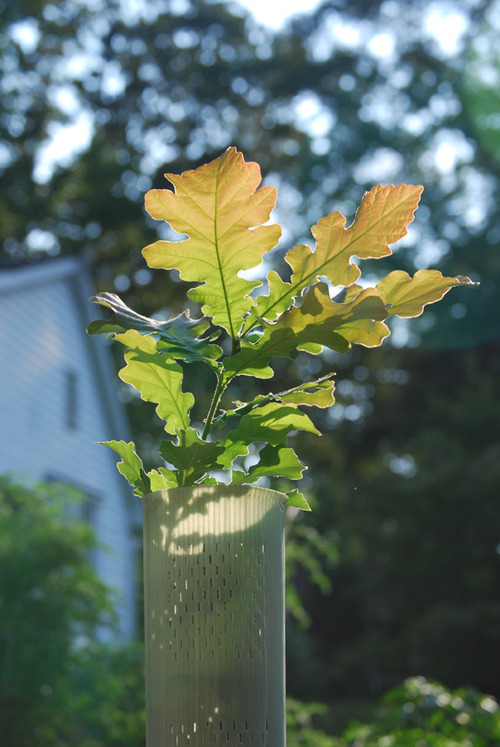 The whole reason I started promoting tree tubes back in 1989 as a newly-minted Urban Forester (University of Minnesota) was because I saw them as a way to successfully plant in urban landscapes tree species that are not sold as large potted or B&B trees by the commercial nursery industry, but instead are available only as seedlings. I was concerned primarily with oaks, which are not widely sold in the nursery trade due to the ridiculous misconception that they are slow growing, but also with other native species that are drastically under planted.
The whole reason I started promoting tree tubes back in 1989 as a newly-minted Urban Forester (University of Minnesota) was because I saw them as a way to successfully plant in urban landscapes tree species that are not sold as large potted or B&B trees by the commercial nursery industry, but instead are available only as seedlings. I was concerned primarily with oaks, which are not widely sold in the nursery trade due to the ridiculous misconception that they are slow growing, but also with other native species that are drastically under planted.My thinking was:
1) Many tree species are only available as seedlings (especially deeply tap-rooted species that don't lend themselves to current nursery production practices)
2) Plant a seedling unprotected in the landscape and it will get eaten or run over with a lawn mower
3) Tree tubes + seedling trees = a low-cost, highly effective way to plant seedling trees in the landscape
Twenty-three years later my conviction that this is the best way to plant landscape trees is even stronger. That's because I have learned,
1) Most potted or B&B trees sold in the commercial landscape industry have deformed, mangled and/or maimed root systems that impede growth, cause long term health problems, and dramatically shorten the lifespan of landscape trees.
2) The smaller the tree you plant, the less root disruption/deformation there is, the faster it will growth, the healthier it will be, and the longer it will live.
Landscape tree tube naysayers have often made the argument that tree tubes in the landscape, and especially when used for street trees, would likely become targets of vandalism. To which I say:
1) In the increasing number of cases where tree tubes have been used to establish street, park and landscape trees the amount of vandalism has been nil.
2) Trees do get vandalized. Would you rather have a vandal wreck a $300 B&B tree or a $10 tree tube and seedling combo?
I am getting more and more emails and phone calls from folks thinking along the exact same lines. According to one online poll of tree tube buyers 13% of them are using the tree tubes to plant landscape trees. Back when I started that number was a lot closer to zero.
I received this email from a customer last week:
Within the last few weeks, the Emerald Ash Borer made its way into Massachusetts. In central Massachusetts, the USDA has been trying to eliminate a threat from the Asian Long Horned Beetle. I think because of pests like these there will be increasing emphasis on ways we can increase biodiversity in the forest. The tree shelters seem like they should greatly improve results... In these difficult economic times, the town does not have the funds to remove all the dead trees, never mind plant new ones. I wondered if planting seedlings and using tree shelters might be an economical way to get something new planted in the springtime.
To which I say: Amen!
And here is an awesome post with a first hand case study of using tree tubes to plant landscape trees - and it involves planting my favorite tree, bur oak - a FAST GROWING, rugged, gorgeous trees that is laughably under planted in the landscape.
No comments:
Post a Comment